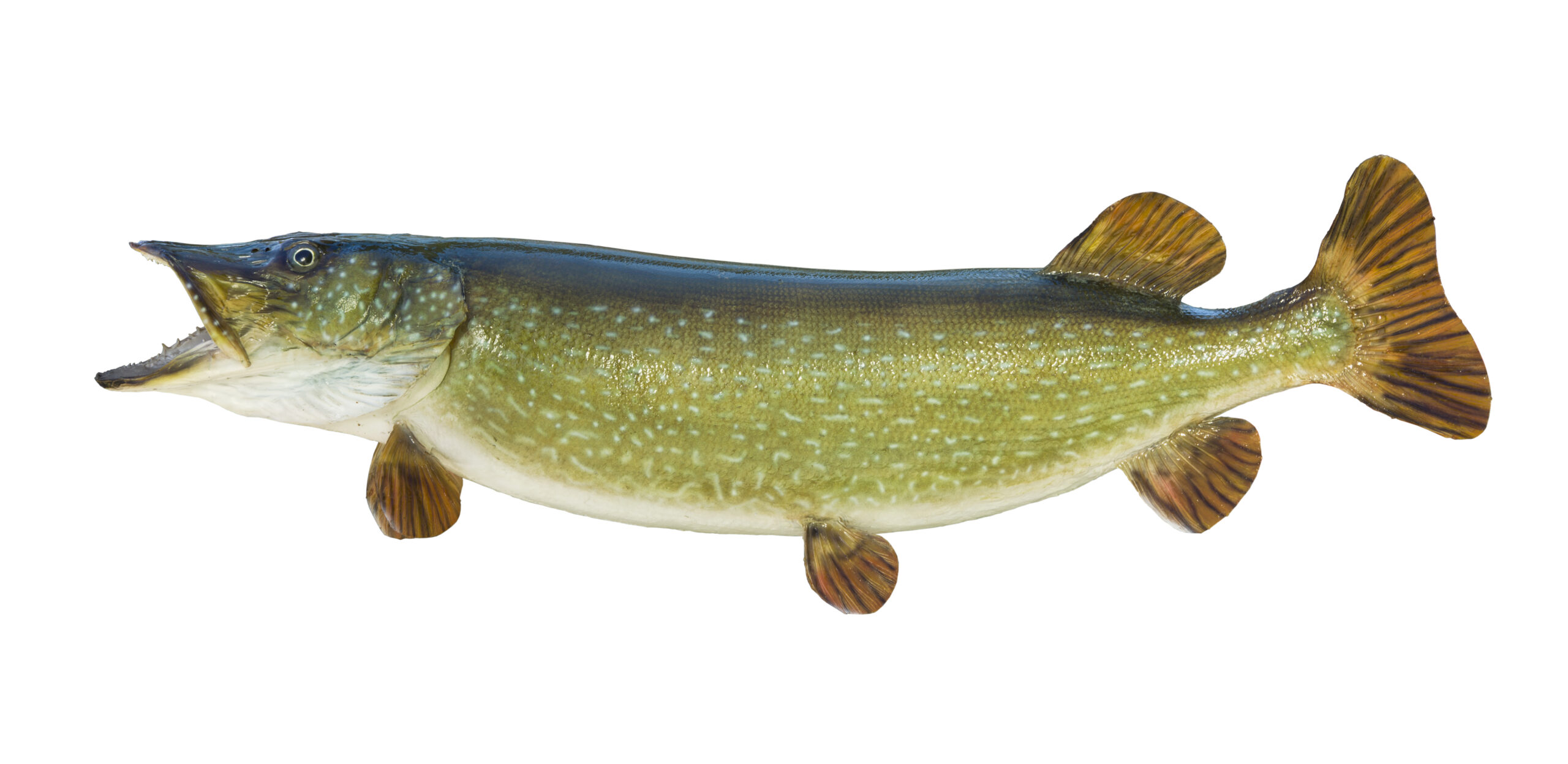Other common names:
Other common names : Grass Pickerel, River Pike
Scientific name : Esox niger
English common name : Le brochet en chaîne

Identification
Body shape: Elongated body, moderately compressed laterally.
Average height: 30 to 50 cm, maximum 78 cm.
Colouring: Dark green to almost brown back; golden green flanks; dark chain-like markings on the flanks (hence the name); tiny golden spots at the ends of some scales.
Characteristic external features : Head long and concave in profile; eyes high on the head; large mouth with the lower jaw extending slightly beyond the tip of the profiled snout; large, prominent, sharp teeth; cheeks and lids entirely covered with scales; 4 sensory pores under each lower jaw; low pectoral fins; pelvic fins in abdominal position and about the center of the body length; dorsal fin far back from the anal fin; caudal fin deeply forked and with pointed ends.
Habitat
Warm water (21 to 30 oC), calm, clear and shallow where vegetation is abundant. Rivers, lakes, ponds. Sometimes in brackish water in winter.
Food
The chain pike is a carnivorous predator whose diet consists mainly of fish (cyprinids, crappies, bullheads, yellow perch, etc.). It is opportunistic in its choice of prey. It also feeds on insects, crayfish, snakes, frogs, mice. In winter, it is active and feeds under the ice.
Reproduction
Season: Spring after the ice melts, April and May.
Spawning ground type: Shallow water (1 to 3 m). Flooded shores of rivers, lakes and ponds, bays of lakes and quiet areas of rivers.
Mode: Sexual maturity is reached between 1 to 4 years. No nest is built. The female is accompanied by two smaller males. The pale yellow eggs of about 2 mm in diameter are randomly scattered and attach to the vegetation. A female of average size lays between 6,000 to 8,000 eggs that hatch after 6 to 12 days.

